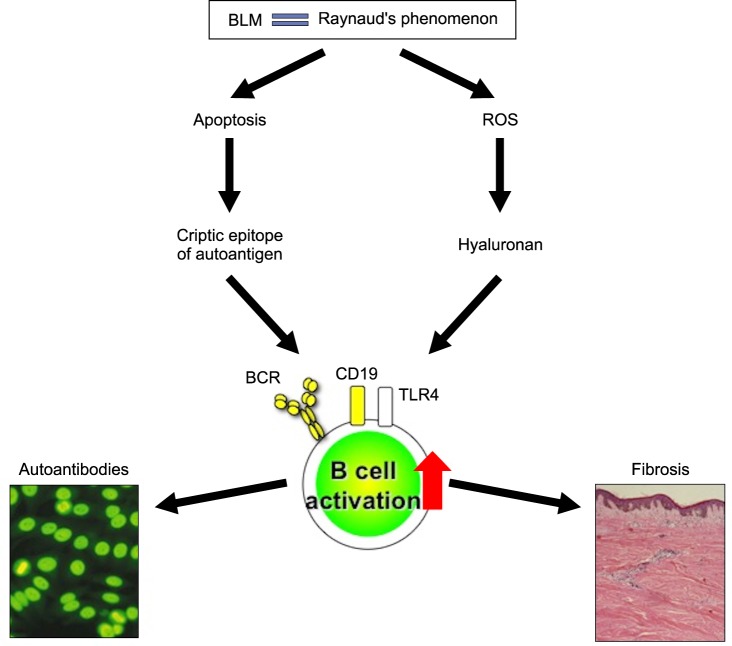Fig. 3.
A model linking systemic autoimmunity and tissue fibrosis in systemic sclerosis (SSc) patients and bleomycin (BLM)-induced SSc mouse models. BLM induced the production of reactive oxygen species (ROS). SSc patients exhibited enhanced ROS production, which was due to ischemia and reperfusion injury following Raynaud's phenomenon. Consequently, ROS increased the production of hyaluronan fragments, which induced B cell activation through toll-like receptor 4 (TLR4) signaling. Simultaneously, in BLM-induced SSc mouse models, apoptosis was prominently detected in the skin. In addition, apoptosis was detected in the skin of patients with early stage SSc. In the surface blebs of apoptotic cells, autoantigens including topo I were concentrated, which may result in the antigen presentation of the cryptic epitopes. Remarkably, CD19 loss inhibited B cell activation and autoantibody production. We hypothesize that BLM and Raynaud's phenomenon induce fibrosis by enhancing hyaluronan production, which activates B cells to produce fibrogenic cytokines mainly via CD19 and TLR4 signaling and to induce autoantibody production.

